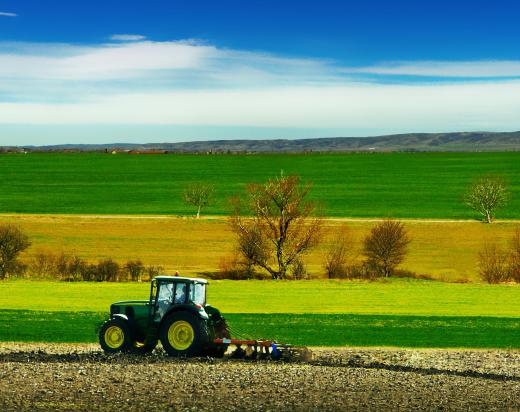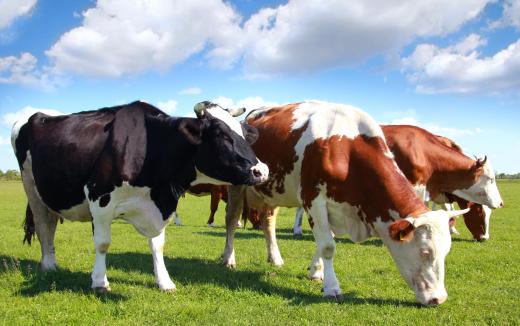Common agricultural practices refers both to activities at the individual farm level and policies authorities establish to set farming standards on a wider scale. At the individual farm level, modern farming’s most common agricultural practices concern tilling the soil, appropriate use of nutrients, controlling weeds and insects, and managing the water supply. National and international farm policies, often called Good Agricultural Practices, focus on safe, sustainable commercial production of food and livestock on a macro level.
For individual farms, agricultural activity begins with tilling the soil for planting seeds, adding plant nutrients and employing pest control methods. The reintroduction of contour farming in the U.S. in the 1930s, for example, led to steeply increased crop yields and steep reductions in soil erosion. Now the most common type of tilling, contour farming simply means plowing furrows that follow the contour of the land. The practice dates to pre-Roman times but was replaced with straight-line plowing for almost 2,000 years after the Romans adopted it.

Advances in nutrients and pesticides have given farmers tools that are both safer and more effective in increasing and protecting crops. Supplementing soil nutrients is a common agricultural practice, with methods ranging from chemical nutrients to organic supplements. The same is true for pest control where chemical treatments, organic compounds, and special plowing-methods can be used to reduce crop loss due to weeds or insects.

Water management overlaps both individual agricultural activities and national or international policies. Most nations and international groups, such as the United Nations, have established Good Agricultural Practices (GAP). These practices set standards for sustainability and safety in food production by addressing soil, water, animal health and public health issues.

Good Agricultural Practices related to water include guarding against pollutants fouling ground water sources, the safe transfer of water from source to soil, efficient sprinkling or irrigation, and water conservation. As with individual farm soil practices, the GAP standards focus on erosion control and land conservation. Standards also cover appropriate use of fertilizer and pesticides.

The policies at the national and international levels also target safe transfer of food stuffs from the farm to the consumer. To accomplish this, most Good Agricultural Practices have quality control and quality assurance standards. These have been considered necessary with the increasing globalization of farming. GAP policies consider the commercial production of livestock among agricultural practices as well and have set standards for consumer safety and animal well-being.
